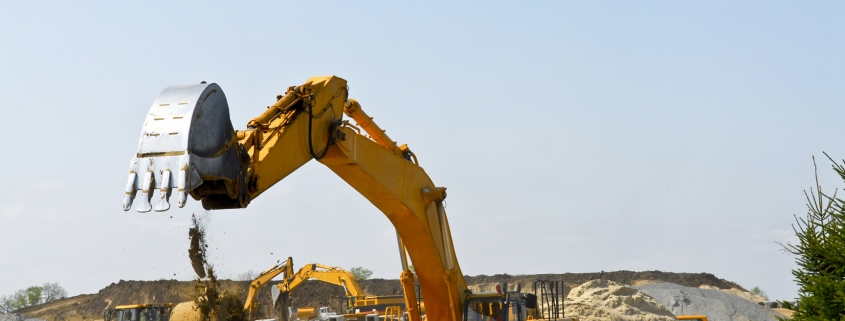INTRODUCTION:
Finite element analysis is widely used in the design and analysis of elastomer components in the automotive and aerospace industry. Numerous publications [7-11] addressed the applications of FEA and have established the method as a reliable tool to predict stress analysis parameters under different loading conditions. In this report we have studied the different material models available to simulate elastomer behavior. Nonlinear Finite element code Abaqus® was used to develop the 2D Axisymmetric and 3D models. Generalized continuum axisymmetric and hexahedral elements were used to model the structures in two and three dimensions using these hyperelastic material models. Testing of materials to characterize the rubber compounds has been carried out in-house and the material constants have been developed using the regression analysis based curve-fitting procedure.
MATERIAL TESTING AND CHARACTERIZATION PROCEDURE:
The application of computational mechanics analysis techniques to elastomers presents unique challenges in modeling the following characteristics:
- The load-deflection behavior of an elastomer is markedly non-linear.
- The recoverable strains can be as high 400 % making it imperative to use the large deflection theory.
- The stress-strain characteristics are highly dependent on temperature and rate effects.
- Elastomers are nearly incompressible.
- Viscoelastic effects are significant.
Finite element codes like Abaqus® Ansys®, LS-Dyna® and MSC-Marc® generally require the input of test data covering the maximum range, which the elastomer product experiences in service conditions. Test data from the main principal deformation modes are generally used as shown in Figure 1. When designing a product from scratch all the four tests can be used to generate the constants for the design but for failure analysis one may not have enough material to carry out all the tests.

Figure 1: AdvanSES Material Characterization Tests
STRAIN ENERGY FUNCTIONS:
In the FE analysis of elastomeric materials, the material is characterized by using different forms of the strain energy density function. The strain energy density of a solid can be defined as the work done per unit volume to deform a material from a stress free reference or original state to a final state. The strain energy density functions have been derived using a Statistical mechanics, and Continuum mechanics involving Invariant and Stretch based approaches.
- Statistical Mechanics Approach
The statistical mechanics approach is based on the assumption that the elastomeric material is made up of randomly oriented molecular chains. The total end to end length of a chain (r) is given by
Where µ and lm are material constants obtained from the curve-fitting procedure and Jel is the elastic volume ratio.
· Invariant Based Continuum Mechanics Approach
The Invariant based continuum mechanics approach is based on the assumption that for a isotropic, hyperelastic material the strain energy density function can be defined in terms of the Invariants. The three different strain invariants can be defined as
I1 = l12+l22+l32
I2 = l12l22+l22l32+l12l32
I3 = l12l22l32
With C01 = 0 the above equation reduces to the Neo-Hookean form.
- Stretch Based Continuum Mechanics Approach
The Stretch based continuum mechanics approach is based on the assumption that the strain energy potential can be expressed as a function of the principal stretches rather than the invariants. The Stretch based Ogden form of the strain energy function is defined as
where µi and ai are material parameters and for an incompressible material Di=0.
The choice of the material model depends heavily on the material and the stretch ratios (strains) to which it will be subjected during its service life. As a rule-of-thumb for small strains of approximately 100 % or lb2, simple models such as Mooney-Rivlin are sufficient but for higher strains a higher order material model as the Ogden model may be required to successfully simulate the ”upturn” or strengthening that can occur in some materials at higher strains.
Figure 2 shows the verification procedure that can be carried out to verify the FEA Model as well as the used material model. The procedure also validates the boundary conditions if the main deformation mode is simulated on an material testing system (MTS) and results verified computationally. Figure 2 shows a bushing on a testing jig, and the plot show the FEA model and load vs. displacement results compared to the experimental results. It is generally observed that verification procedures work very well for plane strain and axisymmetric cases and the use of 3-D modeling in the present procedure provides a more rigorous verification methodology.
Figure 2: Product Testing and FEA Model Verification Results
REFERENCES:
1) Gent, N. A., Engineering with Rubber: How to Design Rubber Components Hanser Publishers, NY, 92
2) Srinivas, K., Material Characterization and Finite Element Analysis (FEA) of High Performance Tires, Internation Rubber Conference at the India Rubber Expo, 2005.
3) ABAQUS Inc., ABAQUS: Theory and Reference Manuals HKS Inc., RI, 02
4) Bathe, K. J., Finite Element Procedures Prentice-Hall, NJ, 96
5) Dowling, N. E., Mechanical Behavior of Materials, Engineering Methods for
Deformation, Fracture and Fatigue Prentice-Hall, NJ, 99
6) Morman, K., and Pan, T. Y. Application of Finite Element Analysis in the Design
of Automotive Elastomeric Components, Rubber Chemistry and Technology, 1988
7) Gall, R. et al. Some Notes on the Finite Element Analysis of Tires, Tire Science and Technology, Vol. 23 No. 3, 1995
8) Surendranath, H. and Kuessner, M. Assessment using Finite Element Analysis, Tire Technology International, 2003
9) Zhang, X., Rakheja, S., and Ganesan, R. Stress Analysis of the Multi-Layered System of a Truck Tire, Tire Science and Technology, Vol. 30 No. 4, 2002
10) Srinivas, K., Material Characterization and FEA of a Novel Compression Stress Relaxation Method to Evaluate Materials for Sealing Applications, 28th Annual Dayton-Cincinnati Aerospace Science Symposium, March 2003.

















